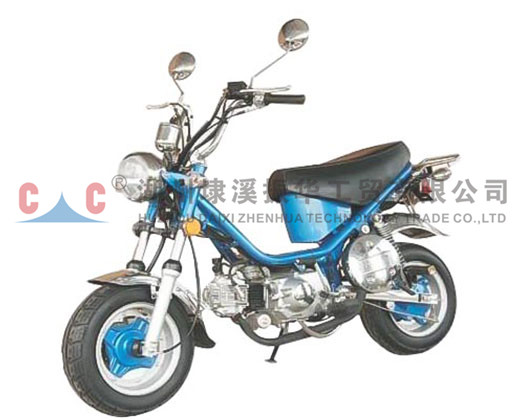The decision to embrace motorcycling often begins with a yearning for freedom, style, and a connection to a bygone era, and for many, the classic-style automatic motorcycle perfectly encapsulates this desire. These machines successfully bridge the gap between vintage aesthetics and modern convenience, offering a riding experience that is both inherently cool and refreshingly simple. The elimination of a manual clutch and gear shift mechanism transforms the act of riding from a technical coordination challenge into a pure, unadulterated pleasure. This automatic simplicity is particularly welcoming for new riders, those returning to two wheels after a long hiatus, or anyone primarily navigating urban environments where constant gear changes can become tiresome. Furthermore, the enduring appeal of the classic design ensures that the motorcycle is not merely a mode of transport but a statement, a nod to the iconic shapes and lines of mid-century motoring, possessing a charm that transcends fleeting trends and retains its visual punch for years to come.
Automatic gear systems offer a smooth, stress-free ride ideal for city traffic. The classic design provides an enduring, stylish look that stands apart from contemporary models.
Finding the ideal economical retro-styled automatic is a pursuit that requires a balanced consideration of cost, function, and future maintenance. Potential owners must first clearly define their primary use, differentiating between a machine intended for daily city commutes, where agility and fuel economy are paramount, and one designed for leisurely weekend excursions. A critical element in the selection process involves evaluating the engine displacement; models featuring smaller displacement powerplants, typically under 150cc, offer substantial benefits in terms of superior fuel efficiency, reduced registration and insurance costs, and a generally lighter, more manageable chassis. Beyond the engine, a thorough assessment of key ergonomic and practical features is essential. Riders should prioritize models with comfortable, well-padded seats that can accommodate various trip durations, alongside effective braking systems for reliable stopping power. The practicality of the machine should also be considered, specifically looking for adequate under-seat or integrated storage solutions to enhance its utility for daily errands or carrying personal items.
Maintaining a small engine, classic-style gas motorcycle is generally a straightforward affair, yet its simplicity should not lead to neglect; consistent, routine care is the bedrock of long-term reliability. The foundation of this upkeep includes the regular monitoring and replacement of engine oil, which is vital for the longevity of any internal combustion engine, especially those subject to frequent stop-and-go city riding. Equal importance must be placed on inspecting the tires for correct pressure and wear patterns, and thoroughly checking the brake pads and fluid levels to ensure maximum stopping capability. The automatic transmission, while simplifying the riding experience, has its own specific maintenance profile. Owners should consult their manual regarding the prescribed intervals for checking and potentially replacing the drive belt or variator components, as the health of these parts is crucial to a smooth and responsive power delivery. Furthermore, small engine systems are susceptible to issues related to stale fuel or carburetor blockages if left unused for extended periods; implementing fuel stabilizer before storage and knowing simple troubleshooting steps for a rough idle or starting difficulty can preempt most common operational hurdles.
The transition to an automatic classic motorcycle is perhaps the most gentle entry into the world of powered two-wheelers, yet it still demands a commitment to mastering safe and proficient control. The fundamental operations are streamlined, centered solely on the precise modulation of the throttle and the confident application of the braking levers. New riders should dedicate time in a controlled environment to practice smooth acceleration, avoiding jerky movements, and achieving progressive, balanced braking using both front and rear controls simultaneously for maximum effectiveness. Once the basic physical controls are intuitive, the focus must shift to advanced roadcraft. Developing sharp defensive riding skills is crucial, which involves constantly scanning the environment for potential hazards, maintaining appropriate following distances, and actively anticipating the actions of other road users. For those who foresee eventually upgrading, the automatic classic motorcycle serves as an excellent training platform, building essential road awareness, balance, and spatial judgment that will provide a solid foundation for the seamless progression to larger, more powerful manual or automatic machines in the future.
Owning a classic-style automatic motorcycle extends beyond the solitary act of riding; it is an invitation into a broader community and a celebration of a distinct cultural niche. Seeking out local or online riding groups focused on vintage or retro scooters and small displacement bikes can unlock a wealth of shared knowledge, maintenance tips, and opportunities for group rides and social interaction. This community aspect enriches the ownership experience, transforming a solo activity into a communal passion. Part of the appeal also lies in the sheer pleasure of personalization and style; the classic aesthetic provides a perfect canvas for custom touches, allowing riders to express their individuality through accessories, color schemes, or unique luggage solutions. Ultimately, these machines carry an inherent cultural and, in some cases, historical value. By keeping these stylish, efficient, and characterful gas-powered classics on the road, owners are not just commuting; they are actively preserving a functional slice of transportation history and enjoying the timeless fun that is baked into their very design.
